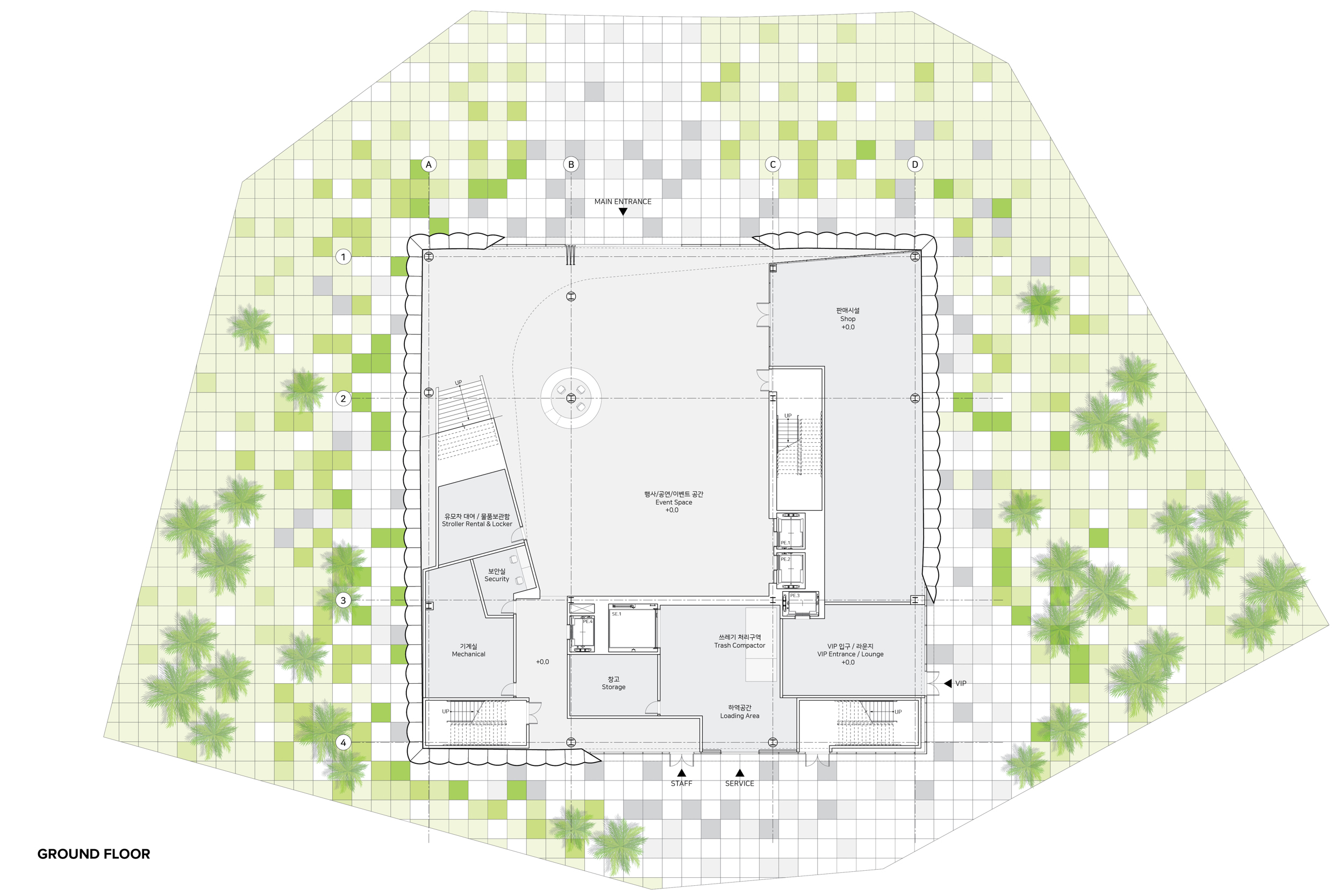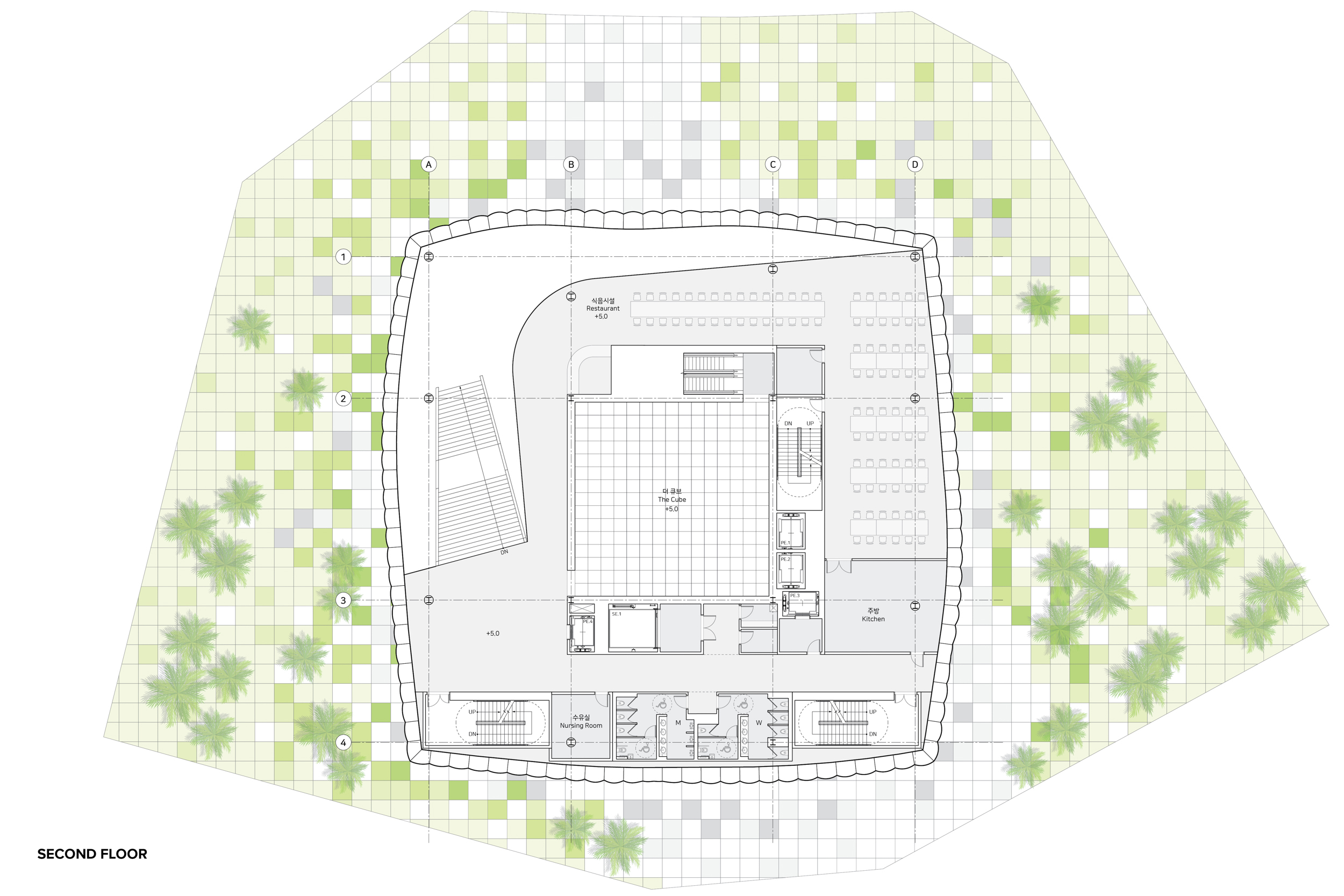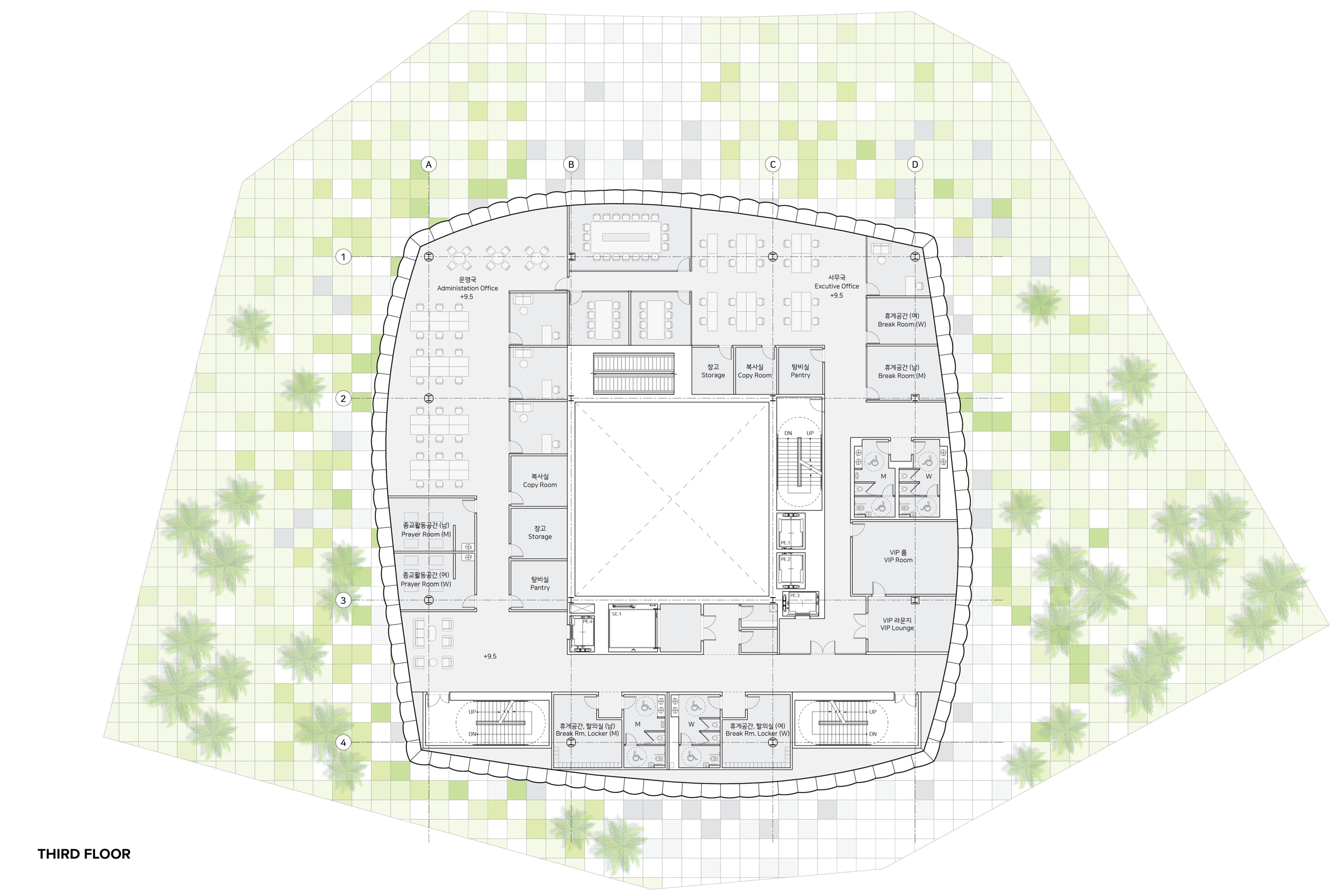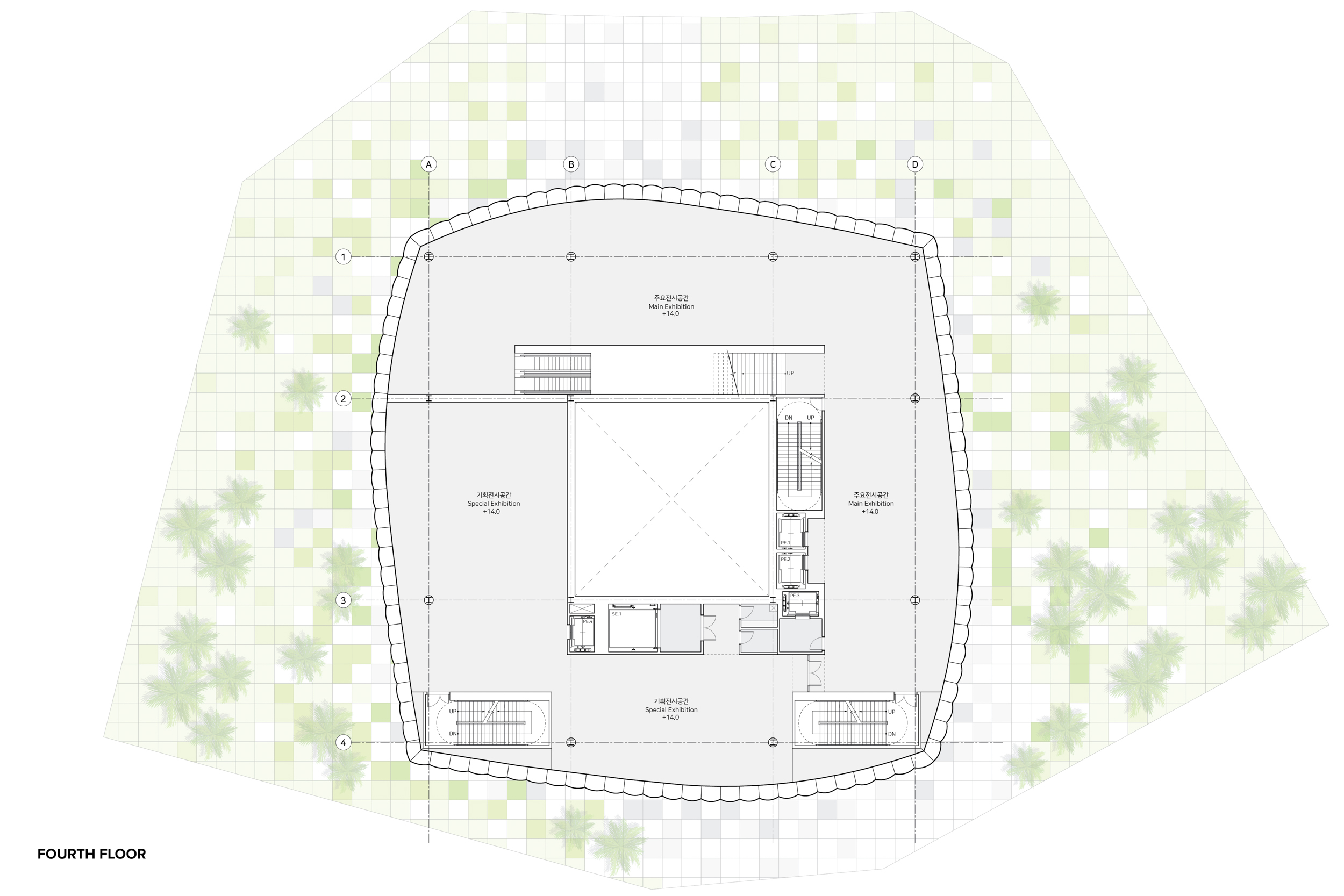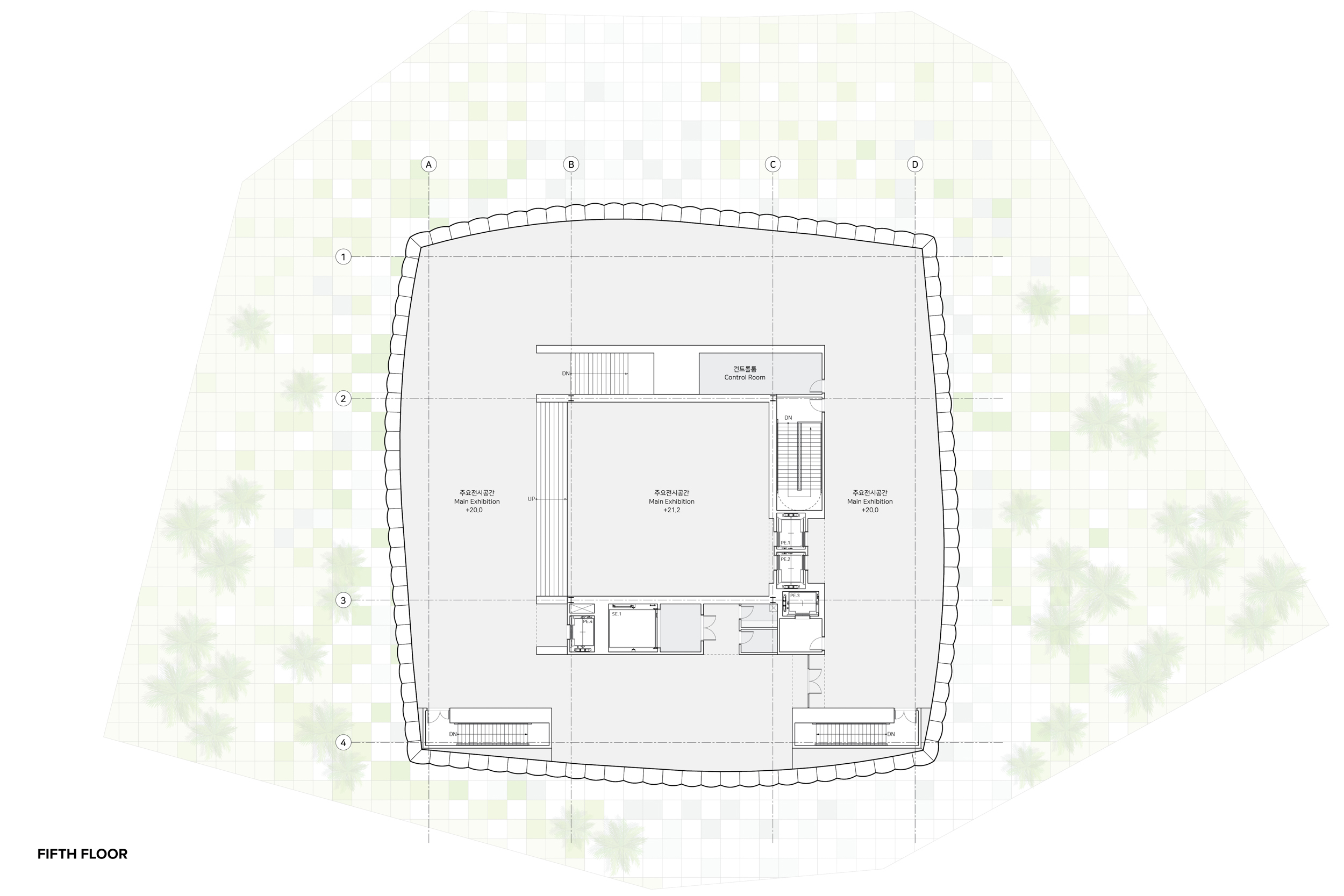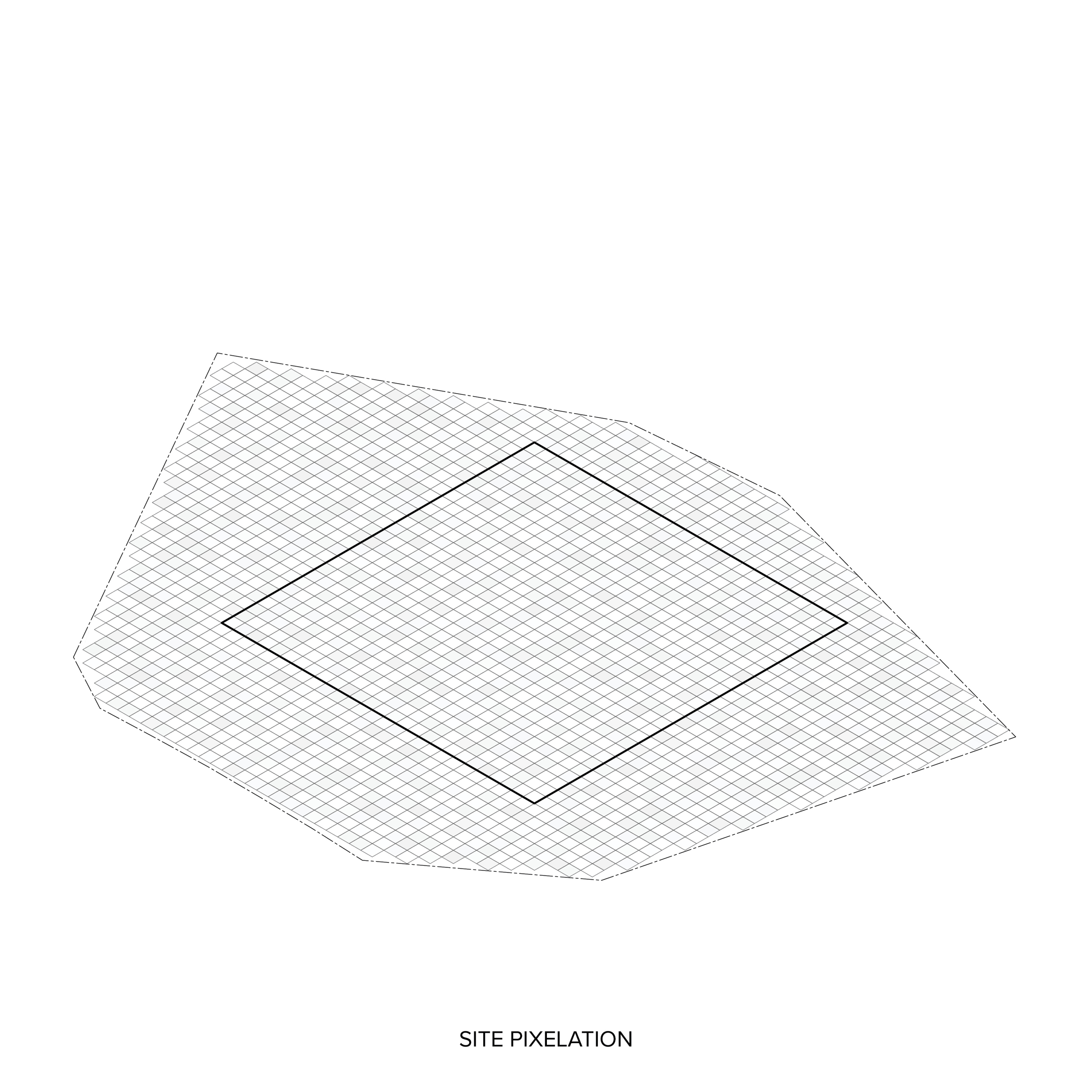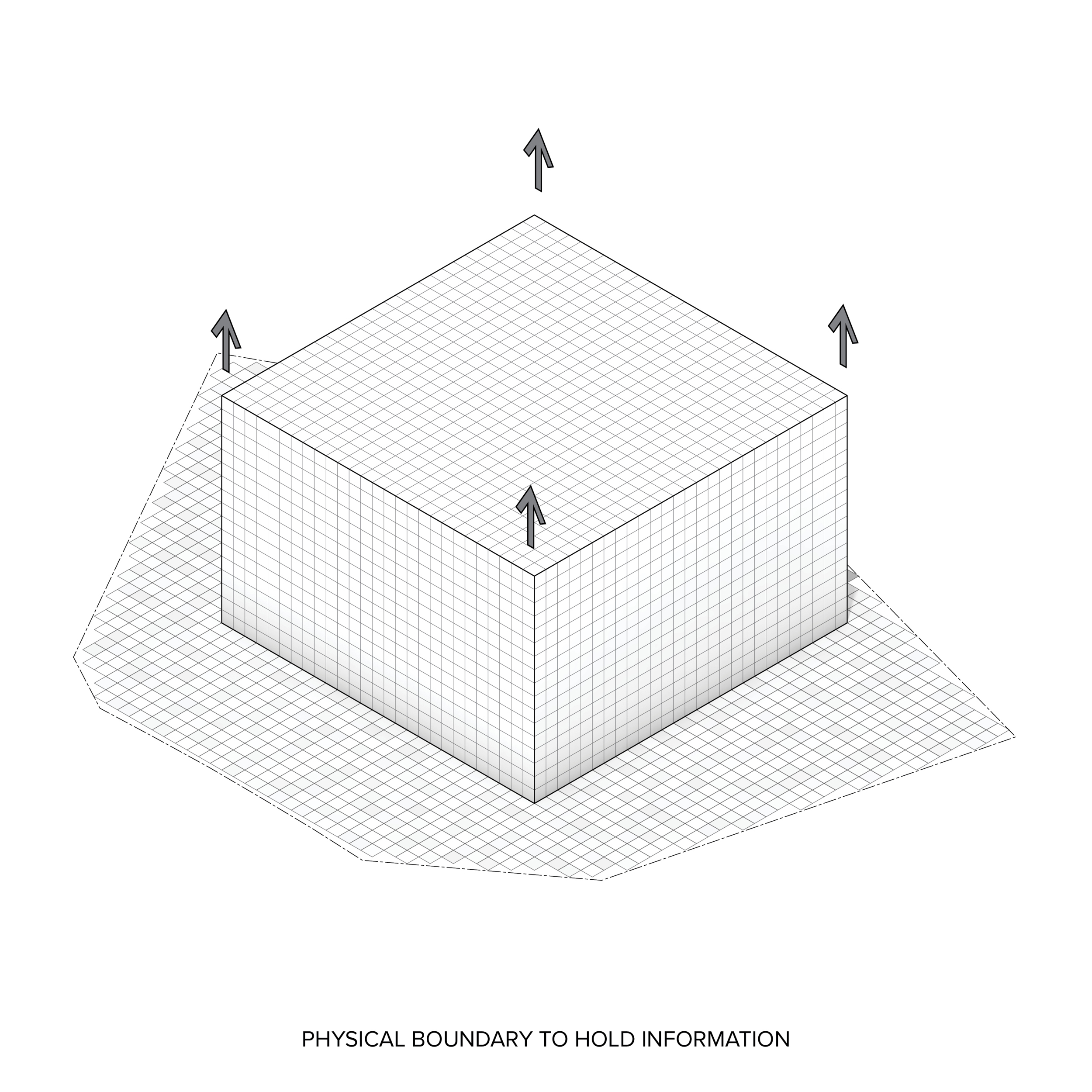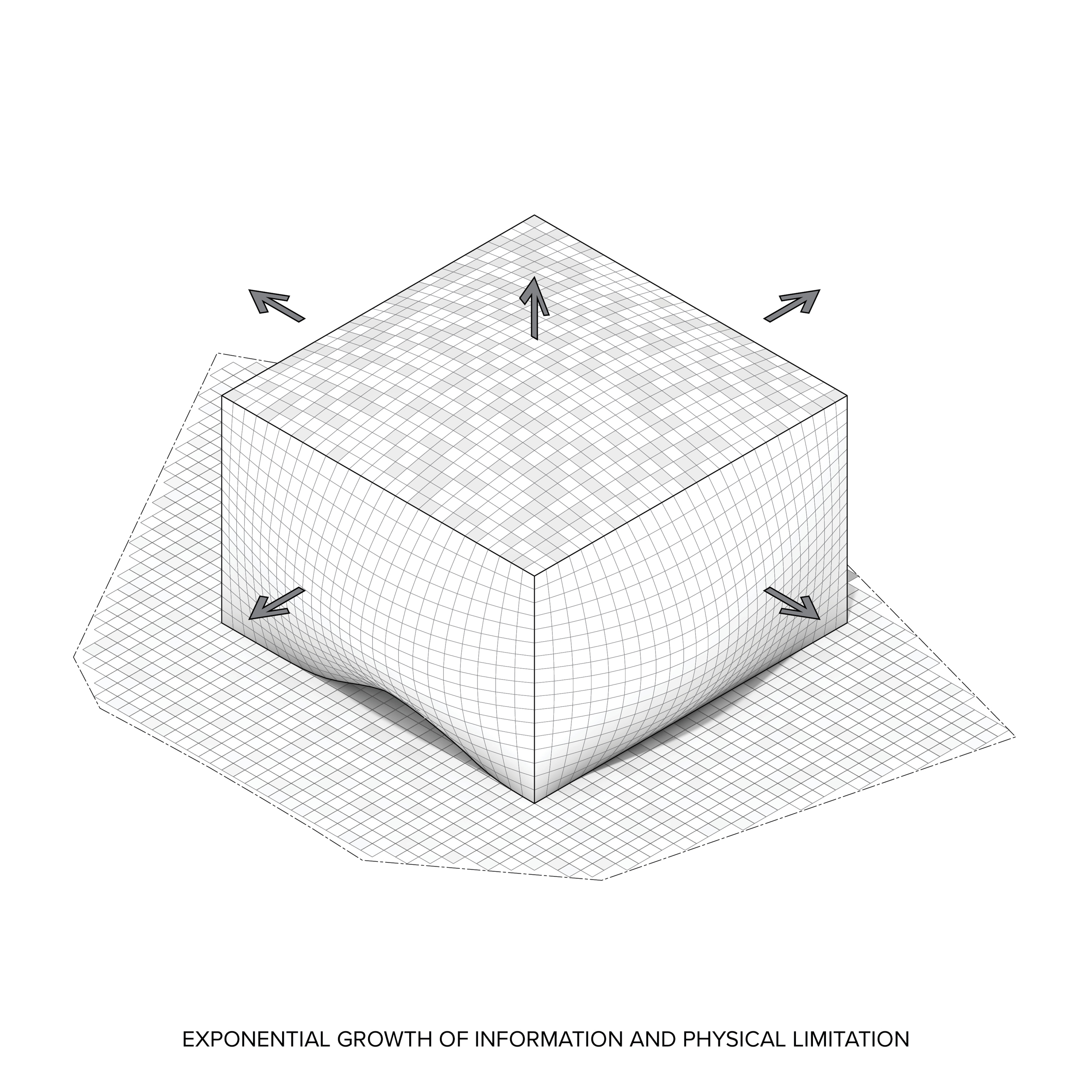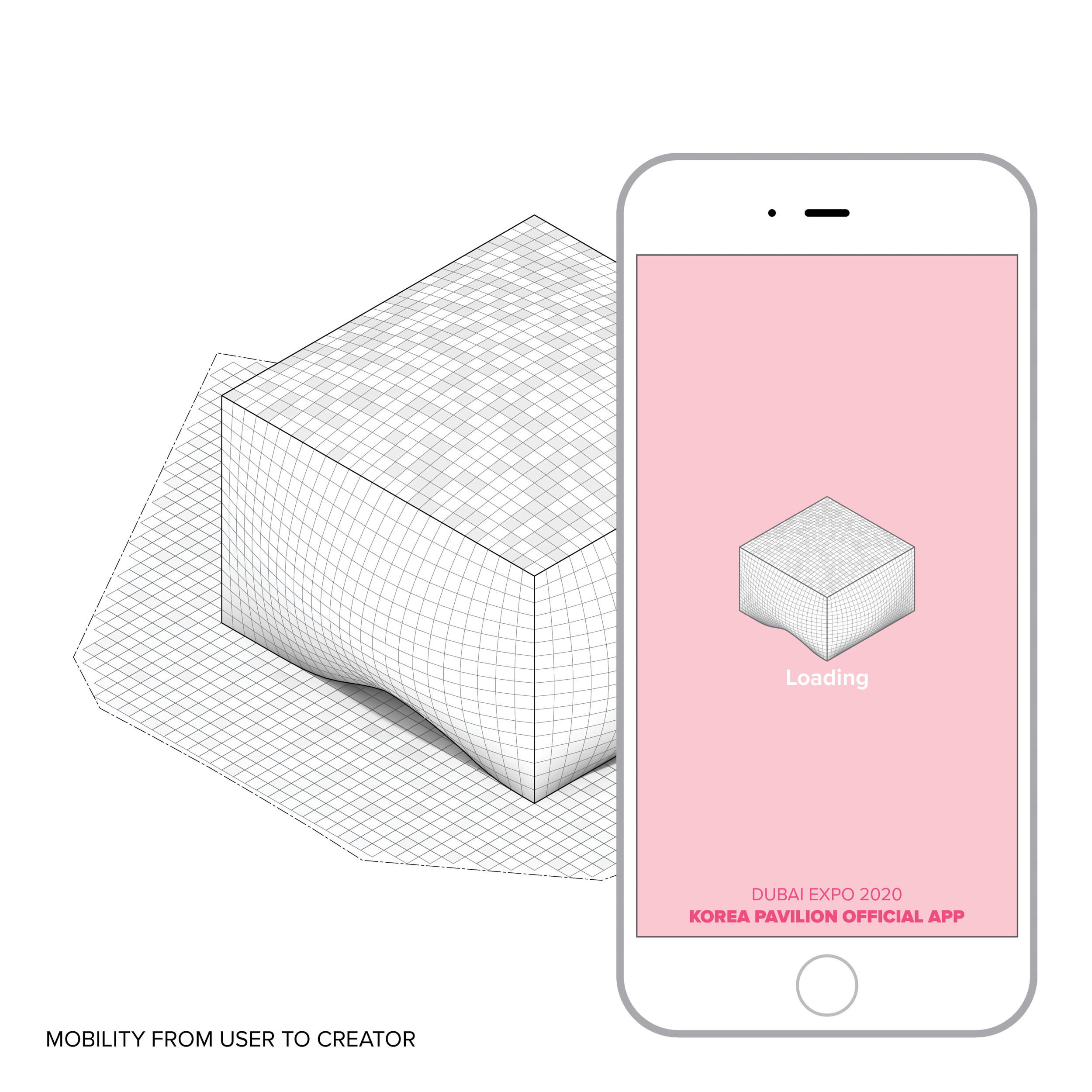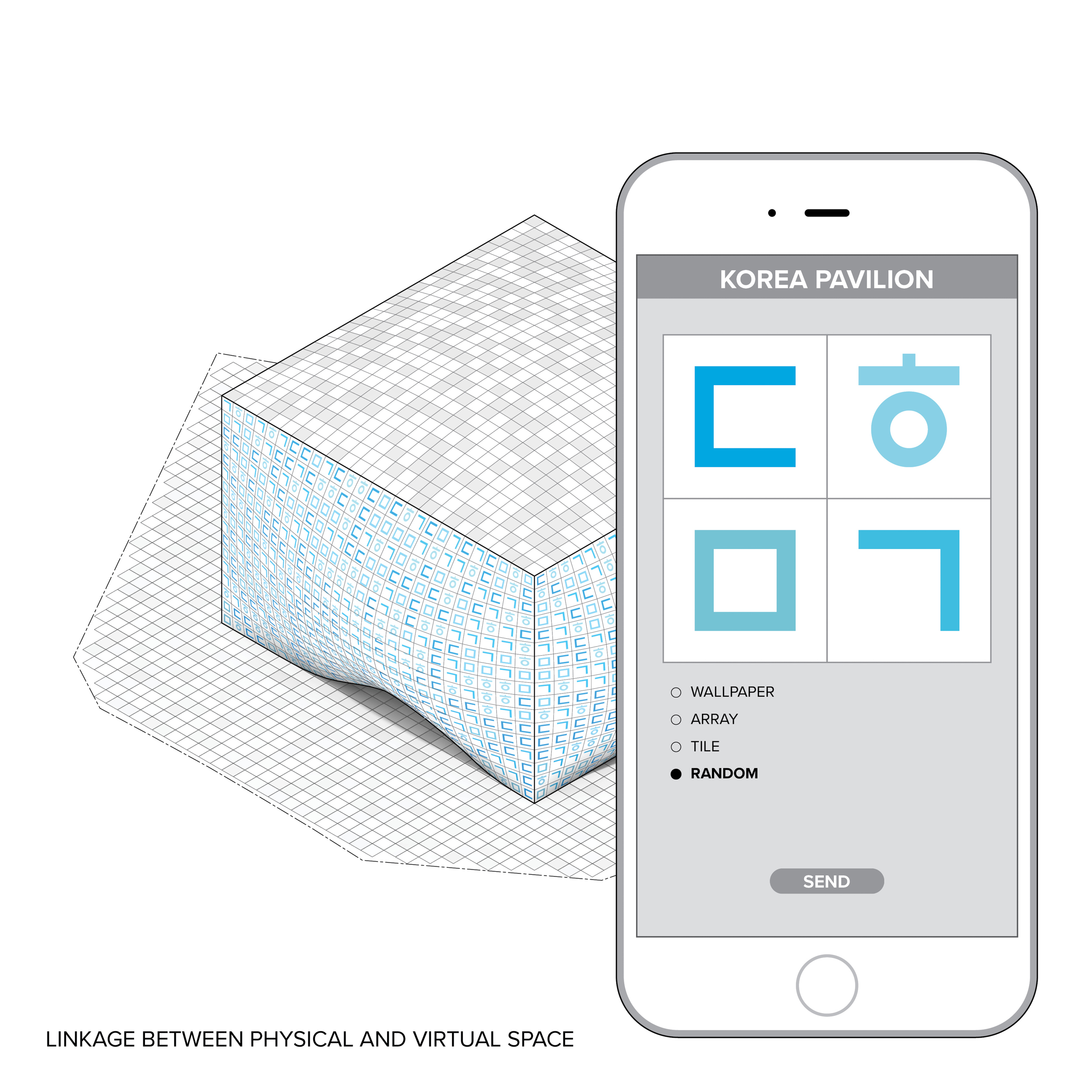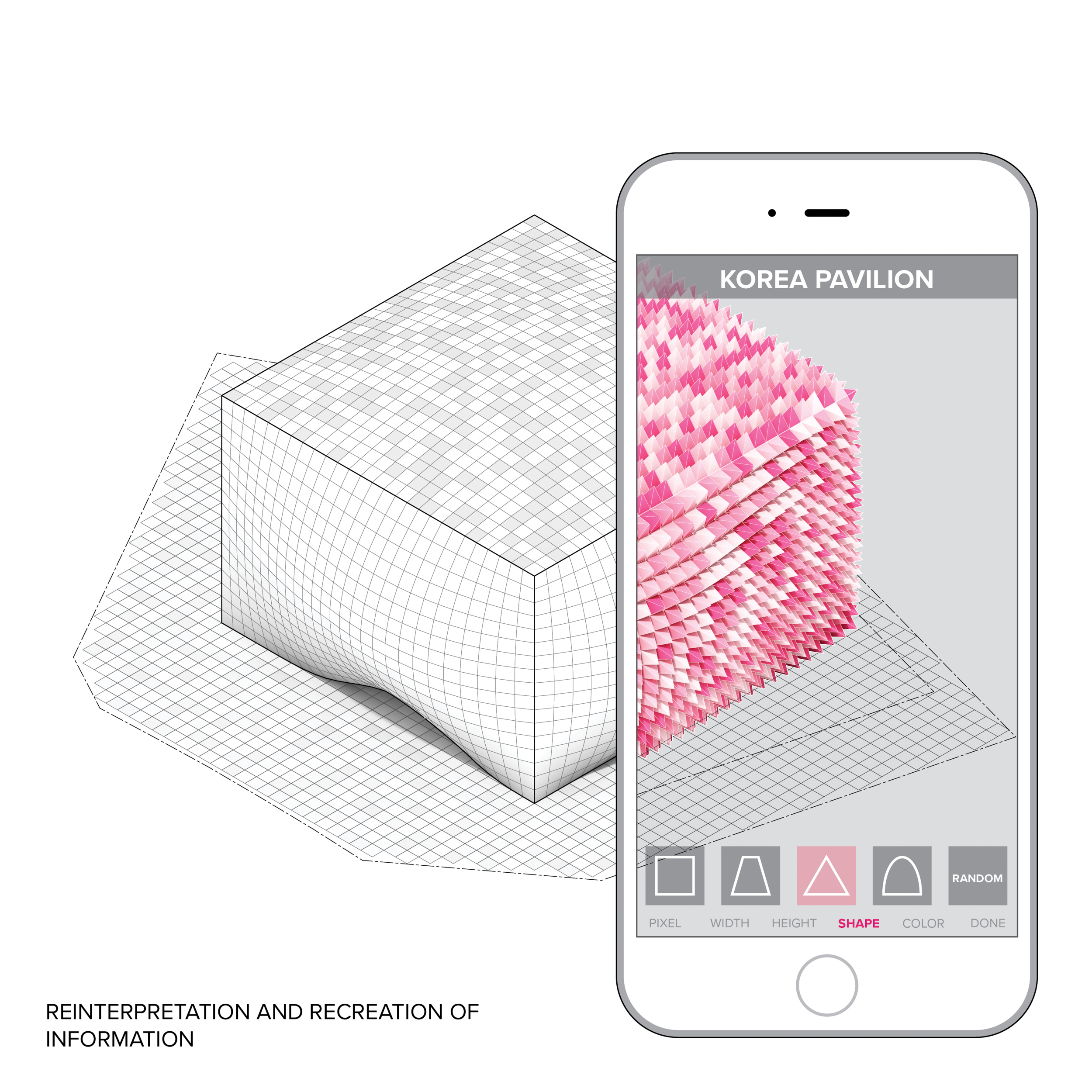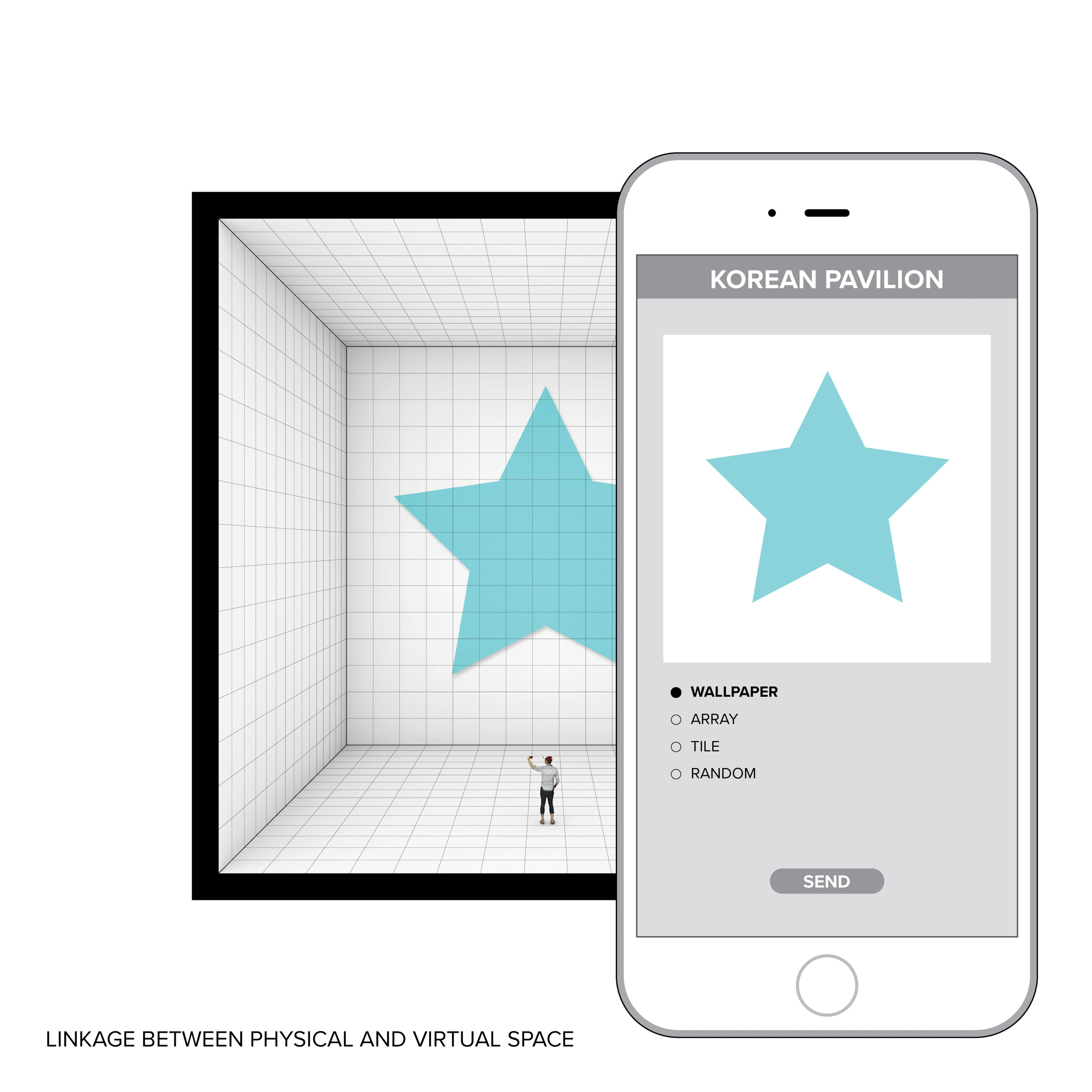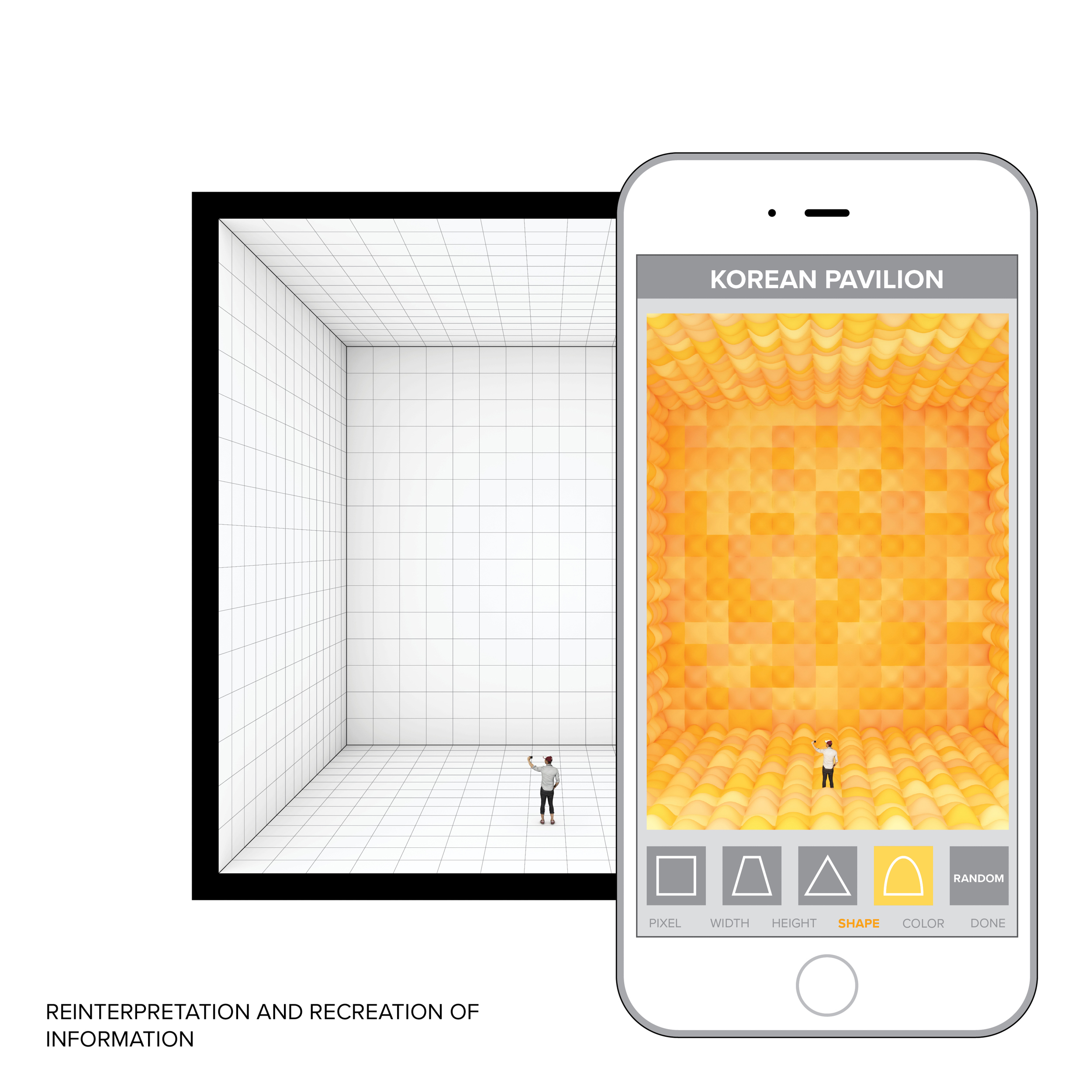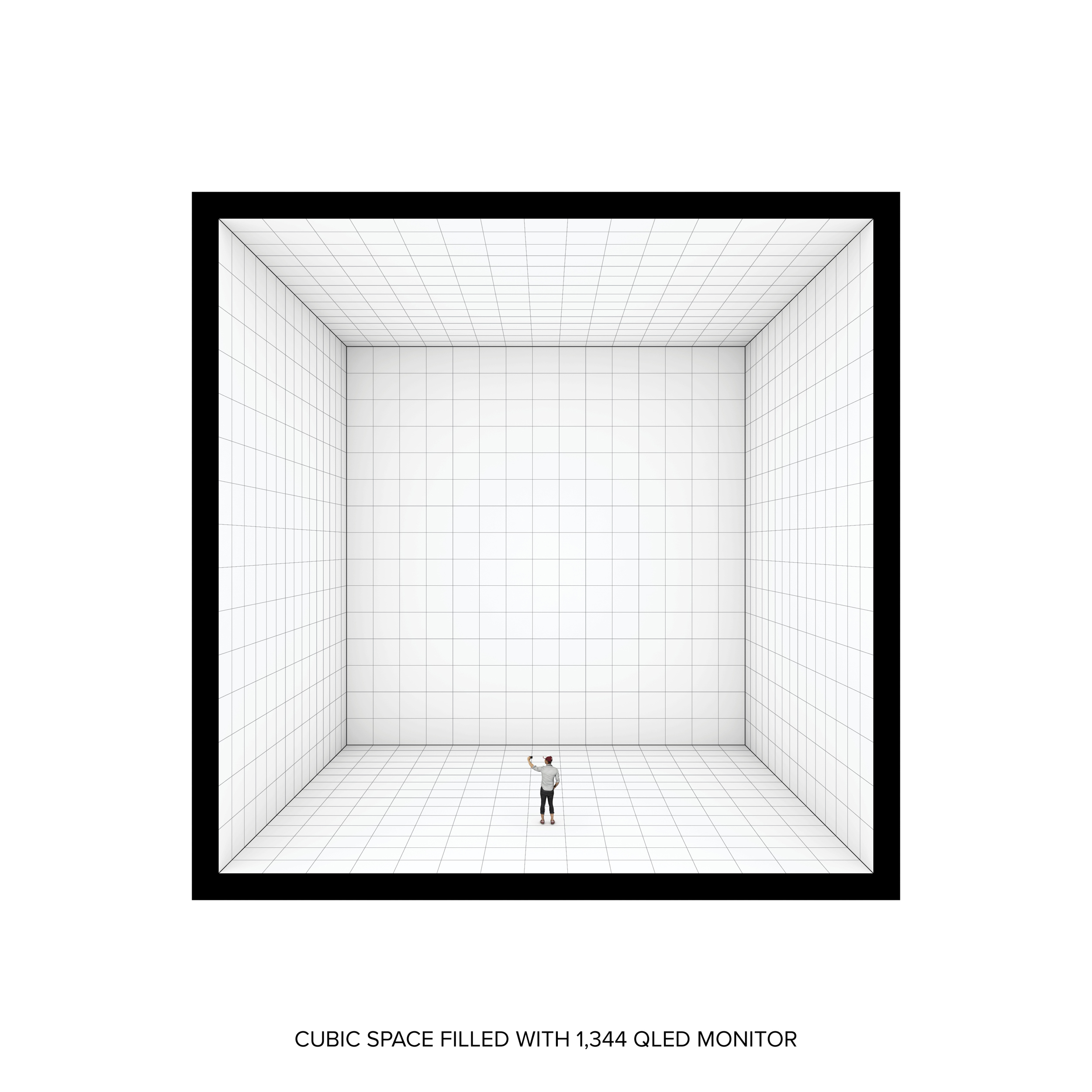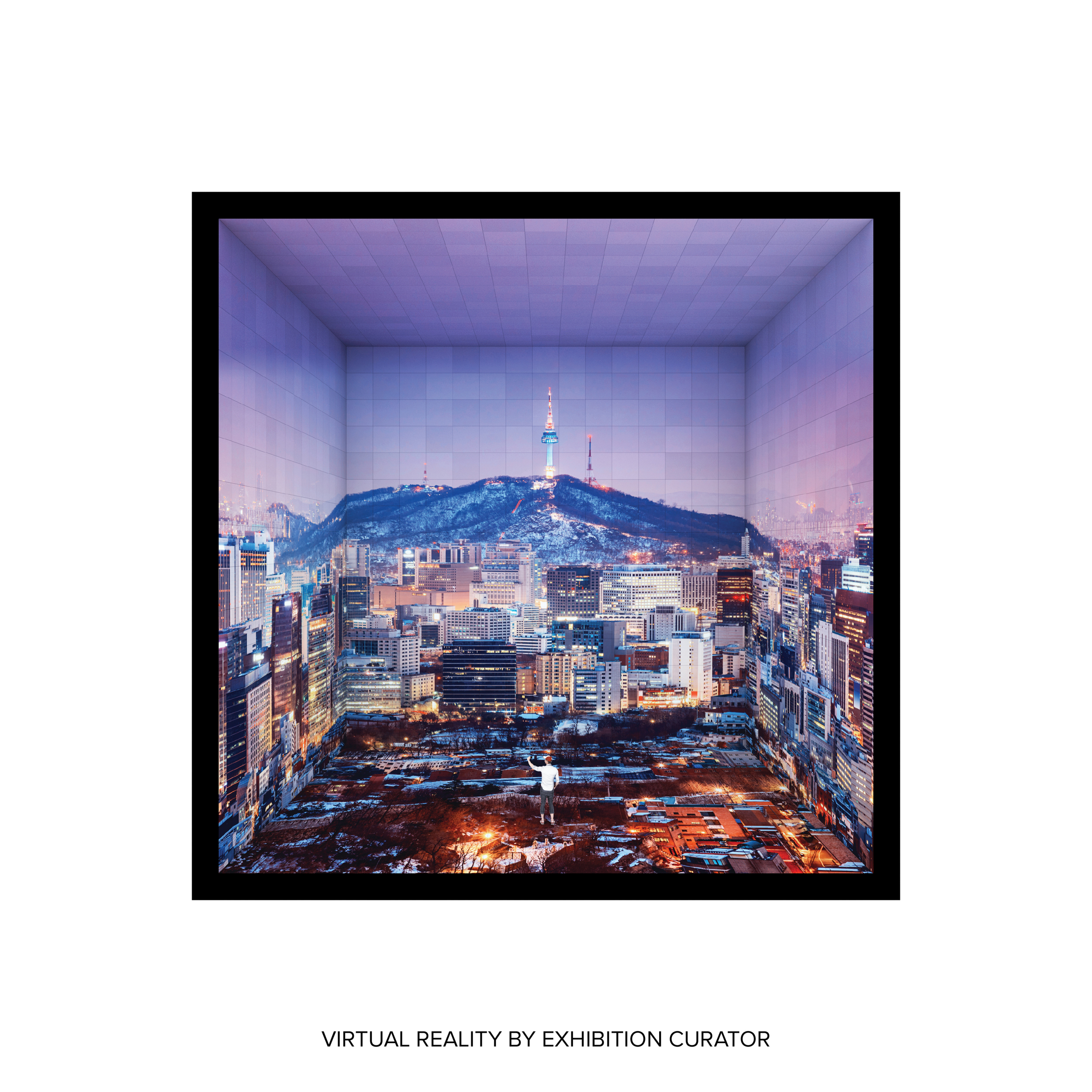In the past, there have generally been more users than creators – a large number of people used the resources, information and tools created by a small number of creators. However, nowadays, creators and users are almost equally numerous. Through the advancement of technology and the increased accessibility of information, anyone can become a creator. Through social network services (SNS) such as YouTube, Instagram, and Facebook, users are publishing media at an unprecedented rate. Creators are increasing exponentially, creating new value that never existed before.
In the near future, the distinction between creators and users will become even more nebulous. Knowledge and information are rapidly expanding, and the processes of selectively accepting and sharing them will become even more ubiquitous.
nooyoon design defines ‘mobility’ as the process by which a user becomes a creator. This transformation is nowhere more evident than in the 2020 Dubai Korea Pavilion, an opportunity to share Korea’s philosophy of advancement through technology with viewers from around the world.
The Korean Pavilion provides a space that is both physical and virtual. As a physical space, a box is inflating in all directions. This reflects the inability of a physical space to accommodate the exponential expansion of information. At the limit of this physical growth in size, the physical space expands to a virtual one.
The virtual space is experienced through each visitor’s personal device. After downloading a special app, visitors can project their own texts, images, or video onto the exterior walls of the pavilion. In addition, visitors can freely design the shape, size, color and pattern of the pixels that comprise the basic module of Korea Pavilion and share it through SNS. In this way, visitors can enjoy being both a user and creator at the same time.
The Cube
The Cube, which stands at the beginning of Korea's exhibition, and is the largest virtual reality (VR) space in the world. This space of 15 cubic meters is lined with HD QLED panels, supporting virtual reality in 360 degrees. Visitors can act as curators, sharing their designs and ideas in the physical space, and freely customizing the display through the application. In addition, this space can be used for promoting Korean culture, technology, and companies connected with other planned exhibition spaces.
Façade & Structure
The exterior walls of the Korea Pavilion are made of Ethylene Tetrafluoroethylene (ETFE), an environmentally sustainable material that meets the sustainability theme of Dubai Expo. As a fluorocarbon-based polymer, ETFE is not affected by ultraviolet light or air pollutants. Since ETFE is only 1% of the weight of glass, it minimizes the burden on the steel frame and saves considerable cost. ETFE is a 100% renewable material and can be recycled in a variety of ways. ETFE has a visible light and UV transmittance close to sunlight and much better thermal performance than glass. Therefore, it is possible to create a pleasant indoor environment with high insulation effect, which saves energy at the same time. In addition, flexible solar panels are installed on the roof to power the pavilion’s operation.
The Korean Pavilion is a steel frame structure, and the Vierendeel truss is used for ETFE Cushion Façade. The facade of the Korean Pavilion is made up of 1.5 x 1.5 m pixels. By using ETFE Cushion, which is translucent, it transmits diffuse light rather than direct sunlight, creating an optimal environment for viewing.
The ETFE Cushion has two layers – inside and outside – with a transparent LED display is installed between them. With the transparent LED display on the translucent ETFE panel, various images and videos can be projected inside and outside the pavilion. In other words, the entire Korean Pavilion becomes a digital canvas. Images and videos are chosen either by the official curators or through visitor participation. Through interaction between visitor and the pavilion, the space is continually being redefined and taking new forms.
